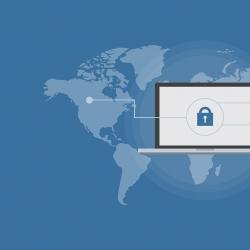How to Automate Your Daily Routine
Maximizing productivity and efficiency in your daily routine can be a game changer. Automating your daily tasks not only saves time but also minimizes the mental load, allowing you to focus on more important aspects of your personal and professional life. Here's a step-by-step guide on how to automate your routine effectively.
1. Identify Repetitive Tasks
The first step towards automation is identifying tasks that are repetitive and time-consuming. These might include:
- Checking emails
- Paying bills
- Grocery shopping
- Scheduling meetings
Listing out these tasks provides a clear view of what can be automated.
2. Choose the Right Tools and Software
Once you've identified the tasks, the next step is to find suitable tools or software to automate them. Here are some categories with recommendations:
-
Email Management: Use tools like Spark or SaneBox to sort and prioritize emails, automatically filter unwanted emails, and set reminders for follow-ups.
-
Bill Payments: Most banks offer auto-payment features. For other bills or expenses, consider apps like Prism or Mint, which can schedule and track payments automatically.
-
Shopping: Grocery delivery services such as Instacart or Amazon Fresh can automate recurring orders. For household items, subscription services like Amazon Subscribe & Save ensure you never run out of essentials.
-
Scheduling: Tools like Calendly allow others to schedule meetings at times that work for you without the back-and-forth communication.
3. Leverage Smart Home Technology
Smart home devices can dramatically simplify routine household tasks:
-
Thermostats: Smart thermostats like Nest learn your schedule and adjust temperatures accordingly, optimizing comfort and energy use.
-
Lighting: Automate lighting using smart bulbs or plugs from Philips Hue or TP-Link, which can be scheduled or controlled remotely.
-
Assistants: Use voice-activated assistants like Amazon Alexa or Google Assistant to set reminders, alarms, or even control other smart devices effortlessly.
4. Create Workflow Automations
Integrating different apps using automation platforms can streamline your tasks further:
-
Zapier: Connects over 2,000 apps, automating workflows by triggering actions in one app based on activities in another. For example, you can automatically save email attachments to Dropbox.
-
IFTTT (If This, Then That): Connects services and devices to create conditional statements. For example, receive a weather update every morning or log work hours automatically.
5. Set Up Personal Routines
Utilize smartphone apps to establish personal routines:
-
Habit Trackers: Use apps like Habitica or Streaks to automate reminders for daily habits, helping you maintain consistency and track progress.
-
Health and Fitness: Apps like Fitbit or MyFitnessPal can automate your daily health logs, syncing wearable data and providing insights without manual data entry.
6. Refine and Adjust Over Time
Automation is not a one-size-fits-all solution. It's important to periodically assess your automated tasks and adjust them as necessary. Technology evolves, and so do your needs and priorities. Regularly updating and fine-tuning your tools will ensure they serve you best.
Conclusion
Automating your daily routine may require some initial effort and investment, but the long-term benefits are significant. By minimizing the mundane, you reclaim time and mental space for things that truly matter—whether it's spending time with family, advancing your career, or simply enjoying leisure activities. Embrace automation, and transform how you live and work.





















